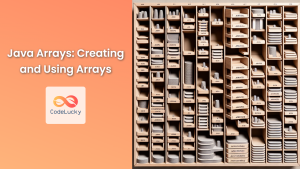In the world of C++ programming, multidimensional arrays are powerful tools that allow us to work with complex data structures. These "arrays of arrays" enable developers to represent and manipulate data in multiple dimensions, making them invaluable for tasks ranging from simple matrix operations to complex game development and scientific simulations.
Understanding Multidimensional Arrays
At its core, a multidimensional array in C++ is an array whose elements are themselves arrays. The most common form is the two-dimensional array, which can be visualized as a table with rows and columns. However, C++ supports arrays of any number of dimensions.
Let's start with a simple example of a two-dimensional array:
int matrix[3][4] = {
{1, 2, 3, 4},
{5, 6, 7, 8},
{9, 10, 11, 12}
};
Here, we've created a 3×4 matrix (3 rows, 4 columns) and initialized it with values.
💡 Fact: The memory layout of multidimensional arrays in C++ is contiguous, meaning all elements are stored in a single block of memory.
Accessing Elements in Multidimensional Arrays
To access elements in a multidimensional array, we use multiple index operators, one for each dimension. Let's look at how we can access and modify elements in our matrix:
#include <iostream>
int main() {
int matrix[3][4] = {
{1, 2, 3, 4},
{5, 6, 7, 8},
{9, 10, 11, 12}
};
// Accessing an element
std::cout << "Element at matrix[1][2]: " << matrix[1][2] << std::endl;
// Modifying an element
matrix[0][3] = 100;
std::cout << "Modified element at matrix[0][3]: " << matrix[0][3] << std::endl;
return 0;
}
Output:
Element at matrix[1][2]: 7
Modified element at matrix[0][3]: 100
🔍 Note: Remember, array indices in C++ start at 0, not 1.
Iterating Through Multidimensional Arrays
Iterating through multidimensional arrays typically involves nested loops. Here's an example that prints all elements of our matrix:
#include <iostream>
int main() {
int matrix[3][4] = {
{1, 2, 3, 4},
{5, 6, 7, 8},
{9, 10, 11, 12}
};
for (int i = 0; i < 3; ++i) {
for (int j = 0; j < 4; ++j) {
std::cout << matrix[i][j] << " ";
}
std::cout << std::endl;
}
return 0;
}
Output:
1 2 3 4
5 6 7 8
9 10 11 12
Dynamic Allocation of Multidimensional Arrays
While fixed-size arrays are useful, sometimes we need to create arrays whose size is determined at runtime. In C++, we can dynamically allocate multidimensional arrays using pointers and the new keyword.
Here's an example of dynamically allocating a 2D array:
#include <iostream>
int main() {
int rows = 3, cols = 4;
// Allocate memory for the 2D array
int** dynamicMatrix = new int*[rows];
for (int i = 0; i < rows; ++i) {
dynamicMatrix[i] = new int[cols];
}
// Initialize the array
for (int i = 0; i < rows; ++i) {
for (int j = 0; j < cols; ++j) {
dynamicMatrix[i][j] = i * cols + j + 1;
}
}
// Print the array
for (int i = 0; i < rows; ++i) {
for (int j = 0; j < cols; ++j) {
std::cout << dynamicMatrix[i][j] << " ";
}
std::cout << std::endl;
}
// Deallocate memory
for (int i = 0; i < rows; ++i) {
delete[] dynamicMatrix[i];
}
delete[] dynamicMatrix;
return 0;
}
Output:
1 2 3 4
5 6 7 8
9 10 11 12
💡 Fact: Dynamic allocation allows for more flexible memory management but requires manual deallocation to prevent memory leaks.
Multidimensional Arrays and Functions
When passing multidimensional arrays to functions, C++ requires that all dimensions except the first be specified. Here's an example:
#include <iostream>
void printMatrix(int matrix[][4], int rows) {
for (int i = 0; i < rows; ++i) {
for (int j = 0; j < 4; ++j) {
std::cout << matrix[i][j] << " ";
}
std::cout << std::endl;
}
}
int main() {
int matrix[3][4] = {
{1, 2, 3, 4},
{5, 6, 7, 8},
{9, 10, 11, 12}
};
printMatrix(matrix, 3);
return 0;
}
Output:
1 2 3 4
5 6 7 8
9 10 11 12
🔍 Note: When passing multidimensional arrays to functions, the compiler needs to know the size of all dimensions except the first to calculate memory offsets correctly.
Advanced Topic: Jagged Arrays
Jagged arrays are arrays of arrays where the member arrays can be of different sizes. While C++ doesn't directly support jagged arrays, we can simulate them using pointers to arrays or vectors.
Here's an example using pointers:
#include <iostream>
int main() {
int rows = 3;
int* sizes = new int[rows] {4, 2, 3}; // Sizes of each row
// Allocate memory for jagged array
int** jaggedArray = new int*[rows];
for (int i = 0; i < rows; ++i) {
jaggedArray[i] = new int[sizes[i]];
}
// Initialize the jagged array
for (int i = 0; i < rows; ++i) {
for (int j = 0; j < sizes[i]; ++j) {
jaggedArray[i][j] = i * 10 + j;
}
}
// Print the jagged array
for (int i = 0; i < rows; ++i) {
for (int j = 0; j < sizes[i]; ++j) {
std::cout << jaggedArray[i][j] << " ";
}
std::cout << std::endl;
}
// Deallocate memory
for (int i = 0; i < rows; ++i) {
delete[] jaggedArray[i];
}
delete[] jaggedArray;
delete[] sizes;
return 0;
}
Output:
0 1 2 3
10 11
20 21 22
💡 Fact: Jagged arrays can be more memory-efficient than rectangular arrays when dealing with irregular data structures.
Practical Application: Image Processing
Multidimensional arrays are extensively used in image processing. Let's look at a simple example where we flip an image horizontally using a 2D array to represent pixel values:
#include <iostream>
#include <vector>
void flipHorizontally(std::vector<std::vector<int>>& image) {
int rows = image.size();
int cols = image[0].size();
for (int i = 0; i < rows; ++i) {
for (int j = 0; j < cols / 2; ++j) {
std::swap(image[i][j], image[i][cols - 1 - j]);
}
}
}
void printImage(const std::vector<std::vector<int>>& image) {
for (const auto& row : image) {
for (int pixel : row) {
std::cout << pixel << " ";
}
std::cout << std::endl;
}
}
int main() {
std::vector<std::vector<int>> image = {
{1, 2, 3, 4},
{5, 6, 7, 8},
{9, 10, 11, 12}
};
std::cout << "Original Image:" << std::endl;
printImage(image);
flipHorizontally(image);
std::cout << "\nFlipped Image:" << std::endl;
printImage(image);
return 0;
}
Output:
Original Image:
1 2 3 4
5 6 7 8
9 10 11 12
Flipped Image:
4 3 2 1
8 7 6 5
12 11 10 9
In this example, we use a 2D vector to represent an image, where each element represents a pixel value. The flipHorizontally function swaps elements to create a mirror image.
Performance Considerations
When working with large multidimensional arrays, performance can become a concern. Here are some tips to optimize your code:
-
Use row-major order: C++ stores multidimensional arrays in row-major order. Iterating through the array in this order (outer loop for rows, inner loop for columns) can improve cache performance.
-
Consider using flat arrays: For very large arrays, using a single-dimensional array and calculating indices manually can sometimes be faster due to better cache utilization.
-
Use stack allocation for small arrays: Stack-allocated arrays are generally faster to access than heap-allocated arrays.
-
Optimize memory access patterns: Try to access memory sequentially when possible to take advantage of CPU caching.
Here's an example comparing row-major vs. column-major traversal:
#include <iostream>
#include <chrono>
const int SIZE = 1000;
void rowMajorTraversal(int arr[][SIZE]) {
for (int i = 0; i < SIZE; ++i) {
for (int j = 0; j < SIZE; ++j) {
arr[i][j] *= 2; // Some operation
}
}
}
void columnMajorTraversal(int arr[][SIZE]) {
for (int j = 0; j < SIZE; ++j) {
for (int i = 0; i < SIZE; ++i) {
arr[i][j] *= 2; // Some operation
}
}
}
int main() {
int arr[SIZE][SIZE] = {0};
auto start = std::chrono::high_resolution_clock::now();
rowMajorTraversal(arr);
auto end = std::chrono::high_resolution_clock::now();
std::chrono::duration<double> diff = end - start;
std::cout << "Row-major traversal time: " << diff.count() << " s\n";
start = std::chrono::high_resolution_clock::now();
columnMajorTraversal(arr);
end = std::chrono::high_resolution_clock::now();
diff = end - start;
std::cout << "Column-major traversal time: " << diff.count() << " s\n";
return 0;
}
The output will vary depending on your system, but you'll likely see that row-major traversal is faster due to better cache utilization.
💡 Fact: The difference in performance between row-major and column-major traversal can be significant for large arrays, sometimes by a factor of 2 or more.
Conclusion
Multidimensional arrays in C++ are powerful tools for working with complex data structures. From simple 2D matrices to complex multi-dimensional data, these arrays of arrays provide a flexible and efficient way to organize and manipulate data.
We've covered the basics of creating and using multidimensional arrays, dynamic allocation, passing arrays to functions, and even touched on advanced topics like jagged arrays. We've also explored practical applications in image processing and discussed performance considerations.
As you continue your C++ journey, remember that mastering multidimensional arrays opens up a world of possibilities in areas like scientific computing, game development, and data analysis. Practice working with these structures, and you'll find they become an indispensable tool in your programming toolkit.
🔍 Note: While C-style arrays are powerful, consider using std::array or std::vector for more safety and flexibility in modern C++ programming.
Keep coding, keep learning, and enjoy the multidimensional world of C++ arrays!
- Understanding Multidimensional Arrays
- Accessing Elements in Multidimensional Arrays
- Iterating Through Multidimensional Arrays
- Dynamic Allocation of Multidimensional Arrays
- Multidimensional Arrays and Functions
- Advanced Topic: Jagged Arrays
- Practical Application: Image Processing
- Performance Considerations
- Conclusion
















